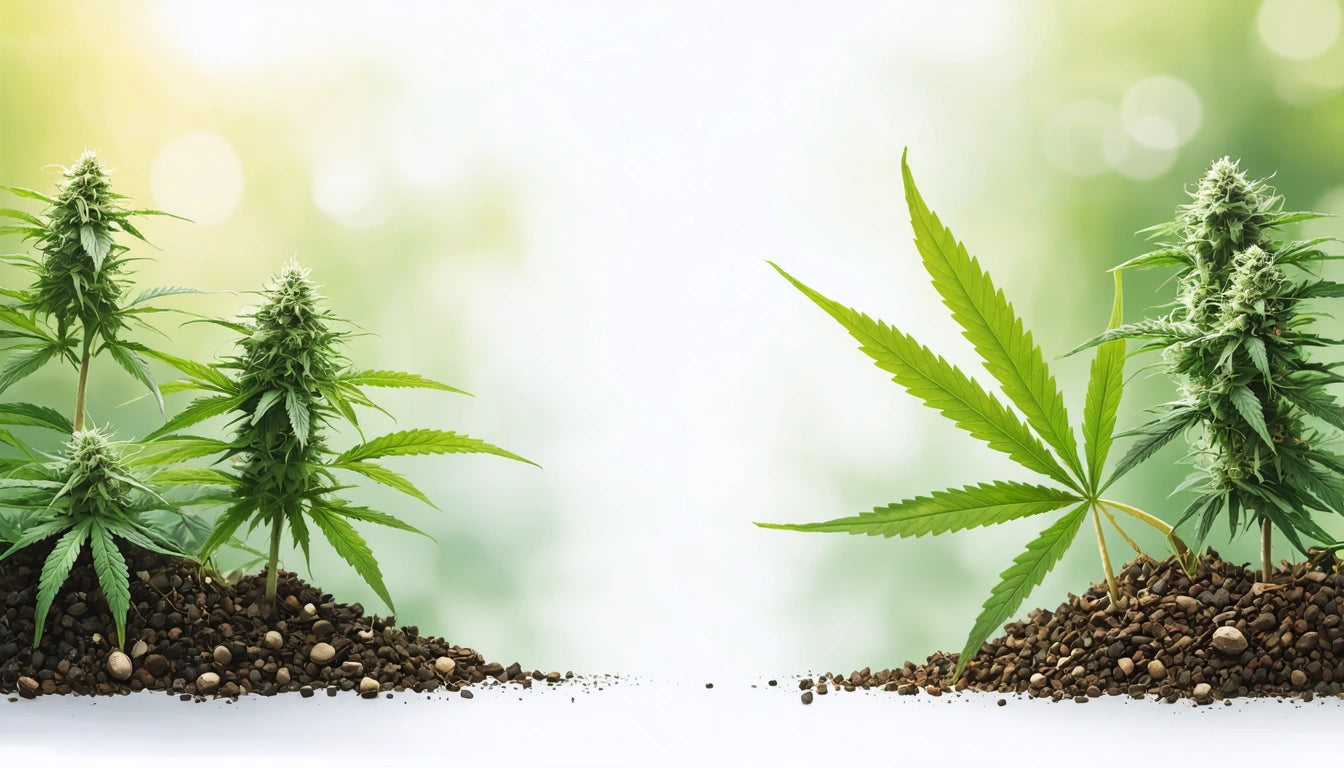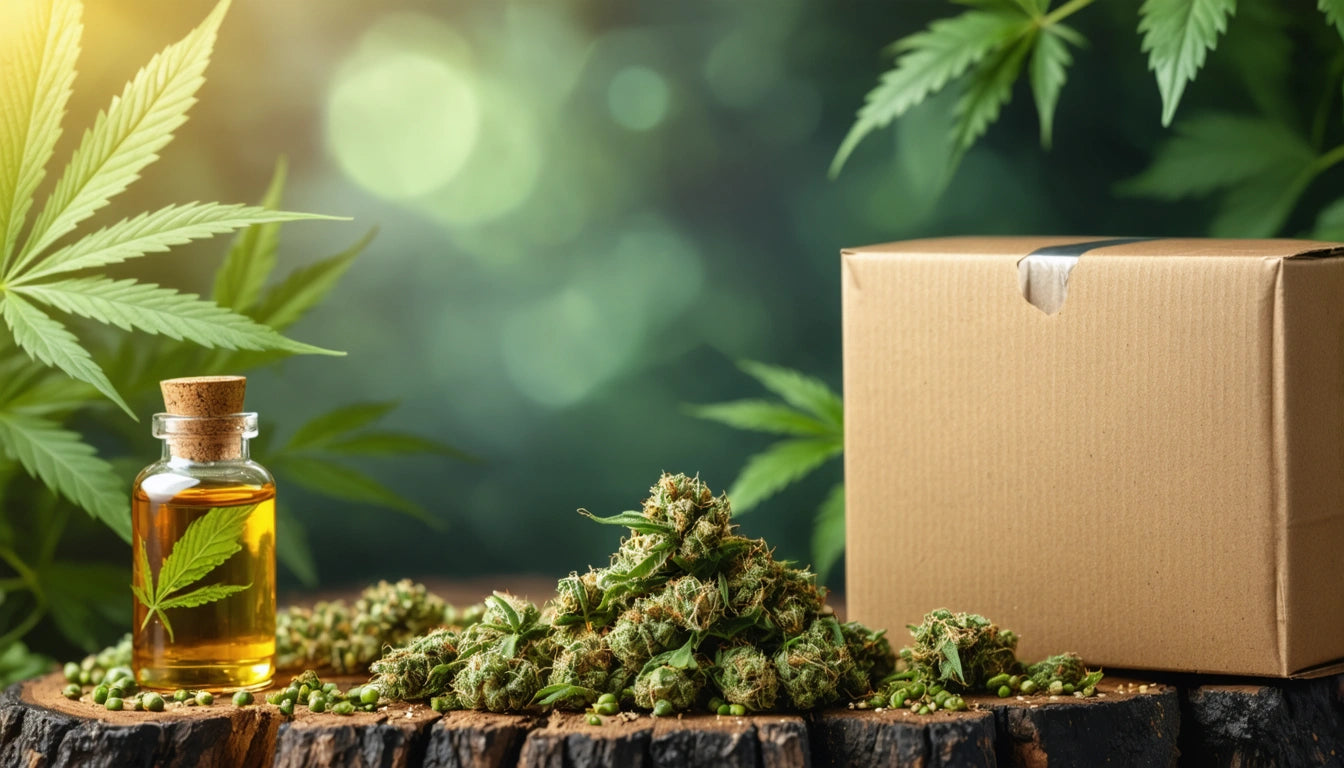Table of Contents
Selecting the right cannabis strain type is a critical decision for cultivators that impacts everything from growing schedule to final yield. The choice between autoflowering and photoperiod strains involves understanding their distinct growth patterns, environmental needs, and production outcomes. This guide examines the key differences to help growers make informed decisions based on their specific cultivation goals and circumstances.
Understanding Cannabis Strain Types
Cannabis plants fall into two main categories based on their flowering behavior: autoflowering and photoperiod strains. The fundamental difference lies in how they transition from vegetative growth to flowering. While photoperiod strains depend on light cycle changes, autoflowering varieties flower automatically based on age, regardless of light exposure.
This distinction stems from genetics. Photoperiod strains come from Cannabis sativa and Cannabis indica species, while autoflowering varieties contain Cannabis ruderalis genetics, a hardy subspecies that evolved in northern regions with short growing seasons and unpredictable light conditions.
Autoflowering Cannabis Characteristics
Growth Cycle and Timeline
Autoflowering strains typically complete their entire life cycle in 7-10 weeks from seed to harvest, making them significantly faster than photoperiod varieties. This rapid growth occurs because they automatically transition to flowering after 2-4 weeks of vegetative growth, regardless of light conditions.
Size and Space Requirements
These plants remain relatively compact, typically reaching 1-4 feet in height. Their smaller stature makes them ideal for limited growing spaces or stealth operations. When harvesting these compact plants, many growers use specialized storage solutions like mylar bags that help preserve freshness while accommodating smaller batch sizes.
Advantages and Limitations
- Multiple harvests possible in a single season
- No need to adjust light cycles
- More forgiving for beginners
- Resilient in challenging environments
- Generally lower yields than photoperiod strains
- Less opportunity to recover from mistakes or stress
Photoperiod Cannabis Characteristics
Light Cycle Requirements
Photoperiod strains require specific light cycles to trigger and maintain flowering. During vegetative growth, they need 18+ hours of light daily. To initiate flowering, growers must reduce light exposure to 12 hours of light followed by 12 hours of uninterrupted darkness. Light cycles significantly impact growth and yield, making proper light management essential for photoperiod cultivation.
Growth Potential and Flexibility
Photoperiod plants can grow indefinitely in the vegetative stage when provided with 18+ hours of light daily. This allows growers to determine plant size before forcing flowering, offering control over the final plant dimensions and potential yield.
Advantages and Limitations
- Higher yields possible with longer vegetative periods
- Greater control over plant size and shape
- More resilient to training techniques
- Typically higher potency and terpene profiles
- Longer overall growing period
- Requires strict light discipline during flowering
Growing Environment Considerations
Indoor Growing Comparison
For indoor cultivation, both strain types can thrive, but with different requirements. Autoflowers perform well under consistent 18/6 or 20/4 light schedules throughout their lifecycle. Photoperiod strains require light cycle management systems to control the vegetative and flowering phases.
Space efficiency often favors autoflowers for small indoor setups. However, photoperiod strains allow for techniques like Screen of Green (SCROG) or Sea of Green (SOG) that can maximize yield per square foot in controlled environments.
Outdoor Growing Considerations
Outdoors, autoflowers offer the advantage of multiple harvests in regions with shorter growing seasons. They can be planted as soon as the last frost passes and will flower regardless of the season. Photoperiod strains outdoors are dependent on natural seasonal light changes, typically flowering as days shorten in late summer and producing a single harvest in fall.
Climate considerations should include temperature stability, as preventing mold, mildew, and pests becomes more challenging with photoperiod strains' longer flowering period, especially in humid climates.
Yield and Potency Comparison
Expected Yields
Photoperiod strains typically produce higher yields per plant due to their larger size and longer growing period. A well-grown photoperiod plant can yield 3-5 times what an autoflower produces. However, when considering yields per growing cycle or per year, autoflowers can compete by allowing multiple harvests in the same timeframe.
Potency and Cannabinoid Profiles
Historically, photoperiod strains have dominated in terms of potency and cannabinoid production. Modern breeding has narrowed this gap significantly, with many autoflowers now reaching 20-25% THC. However, photoperiod strains still offer more variety in cannabinoid and terpene profiles, with some varieties exceeding 30% THC.
For medicinal growers seeking specific cannabinoid ratios, photoperiod strains generally offer more options and consistency. This advantage becomes apparent during the drying and curing process, where proper handling can preserve and enhance the unique cannabinoid profiles.
Best Practices for Successful Cultivation
Regardless of which strain type you choose, certain cultivation fundamentals apply to both. Starting with proper seed germination techniques establishes a foundation for healthy plants. Throughout the growing cycle, monitoring for nutrient deficiencies and addressing them promptly is essential for maximizing plant health and yield potential.
For autoflowers, focus on providing a consistent environment with minimal stress, as they have limited time to recover from setbacks. With photoperiod strains, mastering light cycle management and recognizing proper harvest timing will significantly impact your results.
The choice between autoflower and photoperiod strains ultimately depends on your specific goals, growing environment, and experience level. Many successful cultivators incorporate both types into their gardens, leveraging the unique advantages each offers to maintain a consistent supply of quality cannabis throughout the year.











Leave a comment
All comments are moderated before being published.
This site is protected by hCaptcha and the hCaptcha Privacy Policy and Terms of Service apply.